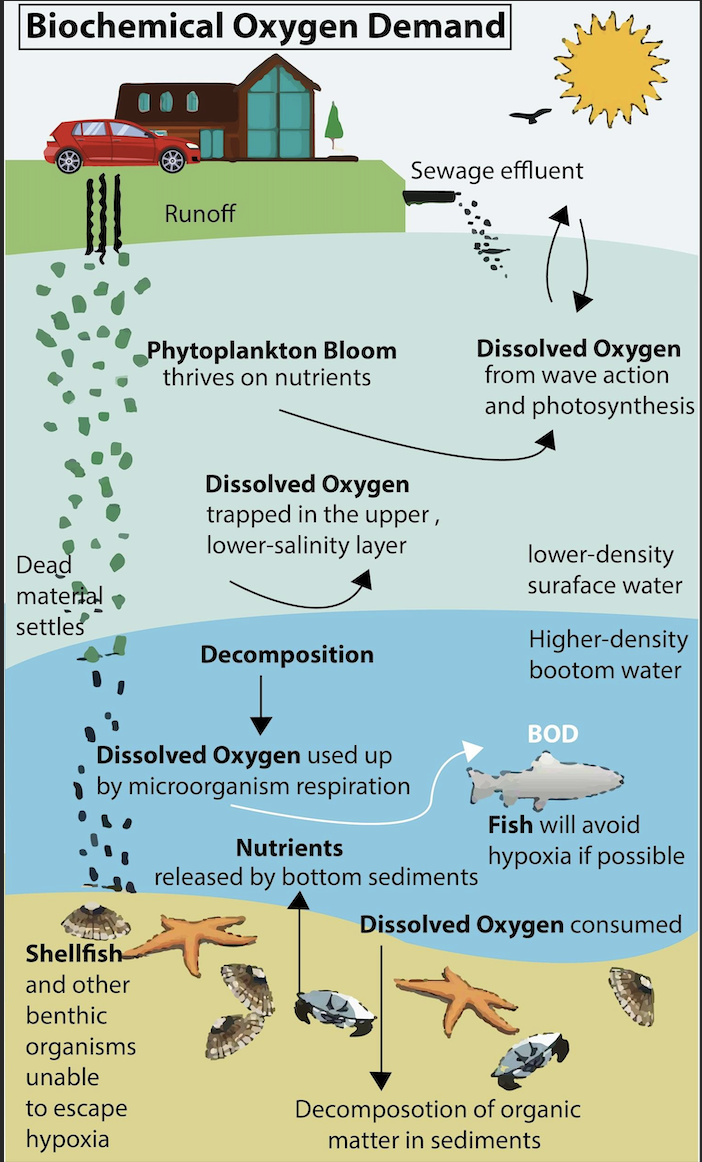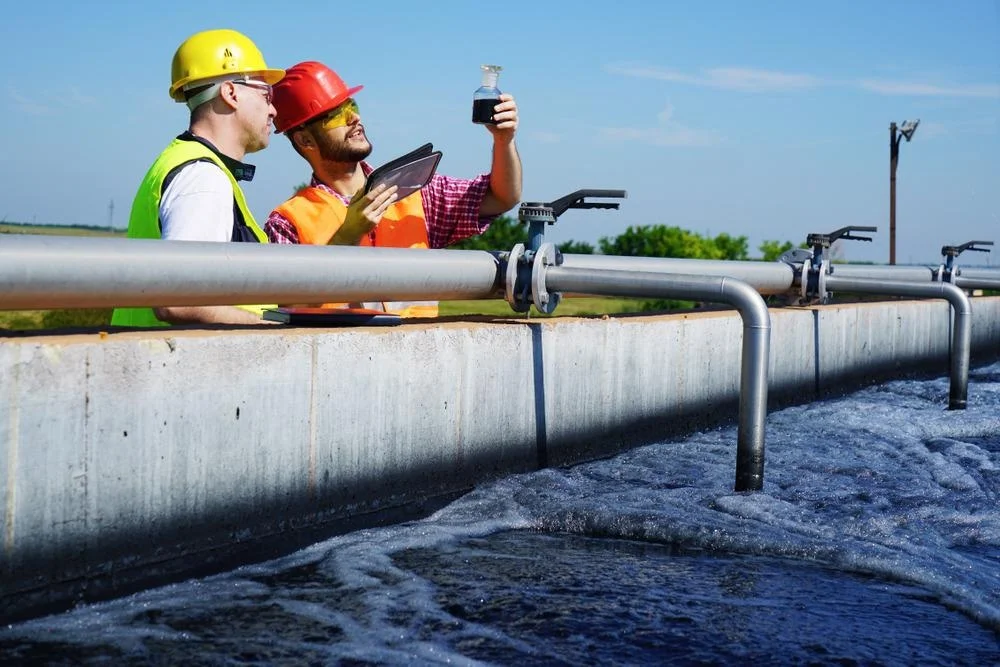Diving Deeper into Environmental Safety and Water Quality Management
Contents
The Essential Role of COD and BOD
The intricate stability of preserving aquatic atmosphere health and the efficacy of wastewater treatment methods is significantly incited with the aid of the degrees of pollution present in water bodies. In the specialized discipline of environmental engineering and water quality treatment and control, pivotal metrics, Chemical Oxygen Demand (COD) and Biological Oxygen Demand (BOD), grow to be important indicators. These signs provide essential insights into the pollution degrees of wastewater, guiding the management, treatment techniques and strategies to conform with environmental standards and safeguard aquatic life. This extensive analysis ambitions to delve into the nuances of COD and BOD, exploring their methodologies, importance, and their collective contributions to information about water quality along with accomplishing environmental conservation goals and objectives.

Chemical Oxygen Demand (COD): A Vast-Spectrum Pollutants Indicator
Chemical Oxygen Demand (COD) is a crucial parameter that explains the total quantity of oxygen required to oxidize each organic and inorganic pollutant in water. This is a key measure for identifying the presence of a wide array of contaminants, including those who are defying biological degradation. The methodology of Chemical Oxygen Demand (COD) includes the chemical oxidation of the pollutants present in water, using strong oxidizing agents, thereby providing a comprehensive and fast-paced gauge of the water's organic pollution load. For industries that discharge wastewater and for treatment centres that strive to fulfil environmental goals (abiding by the set regulations), COD serves as an indispensable tool for actual-time pollutants tracking, close monitoring and control.
The technique of determining COD, which includes observing the water patterns with a colossal oxidant under specific confined conditions, thereby highlighting the scope, flexibility and efficiency of this parameter in the pollution assessment. Chemical Oxygen Demand (COD) is expressed in milligrams of oxygen consumed per litre of water (mg/L). These measurements are pivotal in comparing the effectiveness of wastewater treatment methodologies, guiding important adjustments to decrease environmental impact and make the required compliance at par with regulatory standards.

Biological Oxygen Demand (BOD): Assessing Biodegradable Organic Content
In contrast to Chemical Oxygen Demand (COD), Biological Oxygen Demand (BOD) zeroes in at the oxygen requirement of microorganisms for the decomposition of organic matter under aerobic situations. As a measure of the biodegradable organic pollution in water, Biological Oxygen Demand (BOD) provides critical insights into the potential ecological effect of wastewater (pollutant-loaded) discharges. The traditional standard- five-day BOD test (BOD₅) at 20°C serves as a marker for the microbial intake of organic pollutants, offering an instantaneous link to the health of aquatic ecosystems and the potential in water bodies to support life.
Biological Oxygen Demand’s (BOD's) role extends beyond mere pollution quantification; it is an integral part of designing, implementation, and optimization of organic wastewater treatment procedures. With the aid of figuring out the load of biodegradable organic material, BOD evaluation assists in the sizing of treatment units and the assessment of treatment efficiency respectively, making sure that discharged effluents do not compromise the oxygen levels, which thereby play a crucial role for aquatic organisms.

COD vs. BOD: Elucidating the Differences
In spite of their shared consciousness on water pollutants assessment, COD and BOD diverge appreciably in numerous aspects as mentioned below:
• Methodological Approach: COD's reliance on chemical oxidation gives a broader perspective on water pollution, encompassing each biodegradable as well as non-biodegradable substance. On the other hand, BOD, through biological oxidation, especially measures the oxygen call for related to the decomposition of organic matter via aerobic microorganisms.
• Temporal Efficiency: The rapid outcomes furnished by using Chemical Oxygen Demand (COD) testing are very important for industries and treatment centers requiring immediate, real-time information for process control or regulatory compliance. BOD testing, having a longer incubation period, offers a detailed assessment of the water's biodegradable organic content along with its implications for aquatic life.
• Scope of Size: COD normally reports higher values because of its inclusive measurement of all organic and inorganic pollutants, whereas BOD is limited to the biodegradable fraction of organic pollution, offering a measure of water's herbal purification ability.
Advancing Water great management thru COD and BOD Insights
The difficult balance between COD and BOD measurements is essential to advancing water satisfactory management and environmental safety techniques. those parameters now not most effective facilitate centered pollution control efforts however also inform the improvement of greater powerful and sustainable wastewater remedy technology. via the correct assessment of COD and BOD, environmental scientists and engineers can devise complete methods to reduce water pollution, enhance aquatic ecosystem health, and obtain the broader goals of environmental sustainability.
Prospects for COD and BOD Analysis in the Years to Come
Improvements in technology and increasing awareness of the environment have contributed to the evolution of COD and BOD analysis techniques, which implies an emergence of automated, accurate, and efficient ways for assessing water quality. Real-time pollution monitoring will continue to be revolutionized by developments in sensor technology, data analytics, and machine learning. This will allow for greater adaptability and responsiveness in water treatment options. The value of advanced COD and BOD analysis in influencing policy choices, directing regulations pertaining to the environment, and supporting international water conservation initiatives is certain to rise as the world community focuses more on sustainable water management techniques.

Conclusion
The Integrated Function of BOD and COD in environmentally friendly Management of Water: The comprehensive examination of Biological Oxygen Demand (BOD) and Chemical Oxygen Demand (COD) highlights their critical function in both the assessment as well as regulation of water quality. With its unique focus, methodology, and implications, every indicator adds to a comprehensive understanding of water contamination and the efficacy of treatment methods. The delicate insights offered by COD and BOD measurements will continue to be essential for shaping sustainable water management strategies, safeguarding aquatic ecosystems, and guaranteeing the resilience of water supplies for future generations as issues related to the environment get progressively more complex. The journey towards enhanced environmental stewardship and water quality management is intricately linked with the ongoing advancements in COD and BOD analysis, highlighting the need for continued research, innovation, and collaboration in the field of environmental engineering and water conservation.